Erasmus+ 2022 Annual Report Highlights Success in Education, Training, Youth, and Sport.
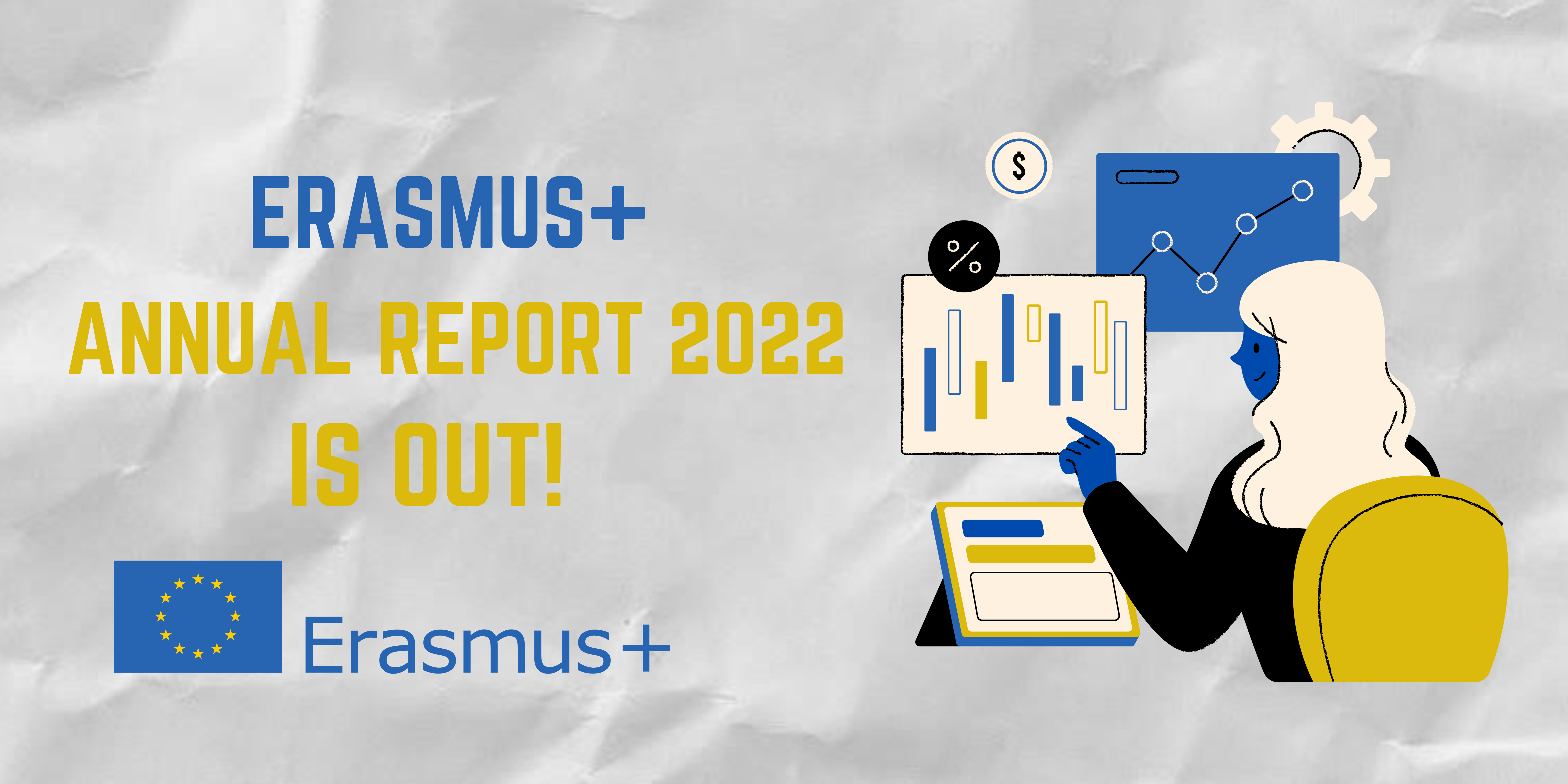
Erasmus+ is the EU programme in the fields of education, training, youth and sports for the period 2021-2027 supporting both individuals and organisations. The Erasmus+ programme main results for 2022 are showcased in the 2022 Annual Report, presented by the Commission at the 6th European Education Summit. The report reveals the implementation of the programme, fund utilization and results achieved.
Erasmus+ 2022 in numbers
Launched in 1987, the current structure Erasmus+ was set in 2014 to include schemes for education, training, youth and sport. Since its beginning the number of participants in mobility has actively increased, even if in terms of cross-border learning mobility 2020 and the first half of 2021 have been affected by the health crisis/pandemic, with around 60% fewer mobilities in 2020. The 2022 report underlines the program’s continuous growth and commitment to societal development.
Erasmus+, with a robust budget of €26.2 billion for 2021-27, nearly double the funding from 2014-20, focuses on social inclusion, green and digital transitions, and democratic participation. In addition, the programme benefits from a further €2,2 billion from the EU’s external cooperation policy instruments as well as contributions from EFTA countries belonging to the European economic area and other non-EU participating countries.
Despite the program’s funding nearly doubling under the new Multiannual Financial Framework (MFF) for the 2021-2027 period, the financial allocation did not follow a linear trajectory. The budget for 2021 was lower than that of 2020, while the 2022 budget closely resembled that of 2020. Following the reduced budget in 2020, which led to a decline in the involvement of organizations, 2022 witnessed an upturn in the number of participants from various sectors. However, the participant numbers did not reach the levels observed in 2020, excluding the receiving organizations involved in mobility activities.
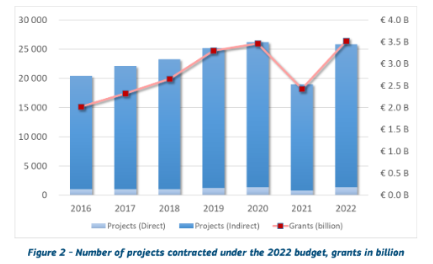
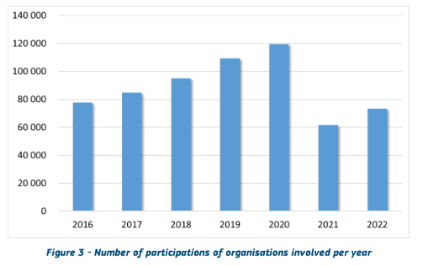
Overall, approximately 26,000 projects have been contracted, supporting over 73,000 organizations in member states and third countries as applicants or partners. Additionally, more than 1.2 million learners and staff engaged in mobility activities, and around 134,000 participants with fewer opportunities received support, accounting for 13.3% of total participants. Since 1987, the program has benefited over 13.7 million people through actions supporting learning mobility. Notably, the highest funding amount is directed towards the higher education field, while School Education boasts the highest number of projects, exceeding 7,700. With the current programme the application process has been simplified to attract even more organisations, in 2022 organisations from more than 150 countries have participated.
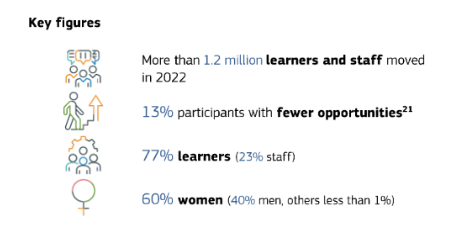
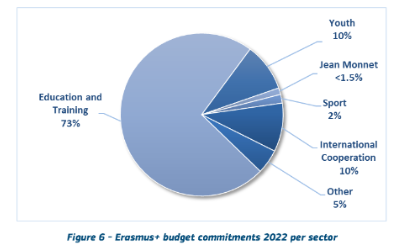
New Actions and Initiatives
In 2022, Erasmus+ introduced new actions, such as the Capacity Building for Vocational Education and Training (CBVET) and expanded learning mobility for pupils in school education. DiscoverEU, a flagship initiative, joined Erasmus+ in Youth to increase educational and inclusion dimensions, specifically targeting young people with fewer opportunities. The initiative was included in the programme after its success as a European Parliamentary Preparatory Action from 2018 to 2021. Besides, the Erasmus+ National Agencies now run a Learning Cycle and an Inclusion Action to increase the educational and inclusion dimensions of DiscoverEU. Furthermore, introduced in 2021, Individual learning mobility of pupils has practically doubled: from 4665 participants in short-term mobility activities contracted under call year 2021 to 9290 participants contracted under call year 2022, while long-term mobility has increased by 85%.
European Year of Youth
2022 was designated as the European Year of Youth, a strategic move empowering young people to shape Europe’s future. Both budgets of Erasmus+ and European Solidarity Corps were reinforced to permit scaling up of most relevant types of actions for the year to ensure effective outreach and communication activities, as well as support the coordination of year-related initiatives at the national level. More than 13,000 activities were implemented, contributing to the objectives of the Year of Youth.
Mobility and Inclusion
The flagship activity of Erasmus+, mobility, saw a positive surge, returning to pre-pandemic levels. With a budget exceeding €4 billion in 2022, a 38% increase from the previous year, the program became more accessible for small organizations and inclusive for those with fewer opportunities. In 2022, Erasmus+ supported 134,000 people facing challenges, including those with disabilities, migrants, and individuals in remote areas or socio-economic difficulties.
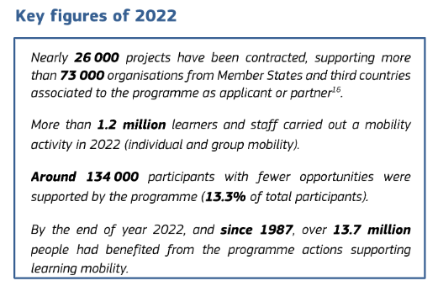
In the meantime the European Commission reparing a comprehensive evaluation of the Erasmus+ that will contribute tothe implementation of the current programme, and preparation of its successor after 2027. The call for proposals for 2024 under the Erasmus+ programme is now open!
Sources: European Commission, Directorate-General for Education, Youth, Sport and Culture, Erasmus+ annual report 2022, Publications Office of the European Union, 2023, https://data.europa.eu/doi/10.2766/211791
